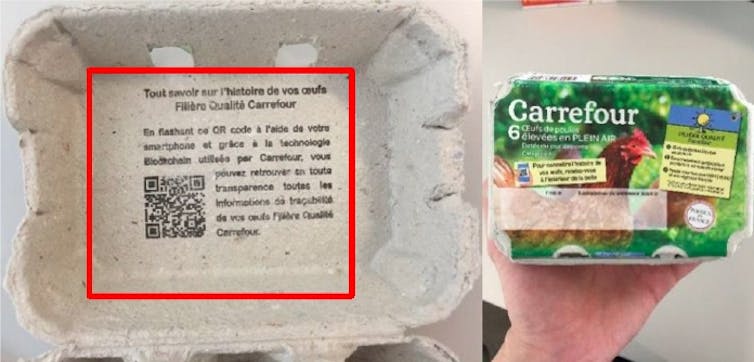Despite attempts to label the blockchain as a disruptive “trust machine”, the tangible business applications of this nascent technology have yet to take shape in practice and be more visible for customers.
In the food and grocery industry, however, trust has become an essential element for increasingly demanding consumers after a decade of scandals such as the horsemeat fraud in 2013 and the Pret à Manger mislabeling in 2016. This year, examples of Nestle’s Buitoni Pizza and Ferrero’s Kinder were found to be contaminated with E. coli.
For food-industry supply chains, the two key trust enhancers are traceability and transparency. Traceability requires cooperation and sharing of information between different actors of the supply chain, ensuring efficiency and reducing risk. Transparency includes disclosure, knowledge sharing, and clarity. It has become one of the key value drivers for food, alongside more traditional factors such as price and taste.
The blockchain functions as a distributed ledger of all transactions that have been executed between users belonging to a network, thus serving as a secure and transparent information storage and transmission technology. It thus has the potential to provide the trust enhancers required by the food industry.
Through the consensus mechanism, the blockchain network also bypasses the need for an intermediary and automates the trust in the whole system, disrupting the way transactions and processes occur compared to the current traditional system.
Retailers are launching more blockchain initiatives

Today, new consumer demands are pushing companies to rethink the way they engage and communicate their information to stakeholders, shedding light onto every step of the supply chain. Among the various existing traceability options, blockchain has particularly gained popularity because it allows real-time tracking and visibility and access to every transaction in the supply chain process.
A number of companies have begun to adopt blockchain, including the retail industry. In 2017, IBM has launched its first version of the Food Trust followed by a commercial version released in 2020 after 18 months of testing. Designed exclusively for businesses, the platform aims to help food companies ensure traceability and brings together distributors, suppliers, manufacturers and other stakeholders in the food chain, aiming to connect these players through an immutable and shared record of food system data. – It was the American giant Walmart that started the trend in early 2018 with the aim of optimising food quality and traceability.
Carrefour followed suit in Europe and started to gradually integrate the technology across several food supply chains by launching a food blockchain in the sectors of chicken, eggs, tomatoes, and milk production.
How to use blockchain
Simply scan your product via a QR code and you will find all the traceability information about the product in question such as the location of the hatchery, the date, the details of the breeding and slaughterhouse, the batch number of the slaughter and the day of its departure to Carrefour, as well as the delivery in your local supermarket and the use-by date.
A study we conducted on a French retail leader that integrates blockchain into some of its products shows traceability systems have become more efficient over time. The technology allows the management of product identification, the secure sharing of data – without possible alteration – between the actors of the supply chain, and a faster recovery of data.
What form will blockchain take?
The blockchain is a distributed ledger of all the links in the production chain where each party records and signs its information on a transparent, secure and immutable blockchain platform. All this information is then aggregated on a database and then put in place on an easy-to-access interface via the QR code of each product.
The video below is a use case of the blockchain at Carrefour and applied to several products. Food traceability technology can track food across all phases of its supply chain, allowing customers to see the complete history of food items and information such as certifications, harvest dates, packaging dates, and temperature data via a simple QR product scan.
The blockchain presents itself as a promising technology offering many features to guarantee trust, traceability, as well as product quality and food waste reduction. The biggest challenge for its expansion remains its technological complexity, however. Companies would need to build technological and human skills to successfully implement it within an organisation. The technology could also benefit from more processing speed that is needed to scale it up, a more affordable data storage, and reduced energy usage.
The authors do not work for, consult, own shares in or receive funding from any company or organization that would benefit from this article, and have disclosed no relevant affiliations beyond their academic appointment.
This article was originally published on The Conversation. Read the original article.







